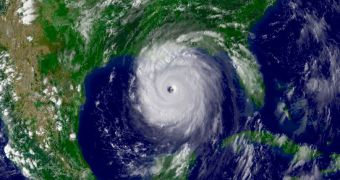Several previous reports have argued that ongoing phenomena such as global warming and climate change are bound to upset weather patterns worldwide.
A startling new report published in the journal Proceedings of the National Academy of Sciences says that, all things considered, such changes will ultimately translate into Katrina-like hurricanes being 10 time more frequent than they currently are.
This basically means that such massive storms might begin to manifest themselves once every two years.
Needless to say, the increased frequency of these extreme weather manifestations will seriously take its toll on human society.
Information made available by Daily Mail says that, when hurricane Katrina hit the US back in 2005, a total of 1,836 people were killed. Furthermore, millions woke up to find that they had become homeless in a matter of hours.
According to the scientists who pieced together this new report concerning the ways in which global warming will disturb the weather patterns that human society has grown accustomed to, an increase of just 2 degrees Celsius in global average temperatures will be more than enough to significantly up the frequency of massive storms.
“We find that 0.4 degrees Celsius warming of the climate corresponds to a doubling of the frequency of extreme storm surges like the one following Hurricane Katrina,” argued researcher Dr. Aslak Grinsted, currently working with the University of Copenhagen.
“If the temperature rises an additional degree, the frequency will increase three to four times and if the global climate becomes two degrees warmer, there will be about 10 times as many extreme storm surges. This means there will be a Katrina magnitude storm surge every other year,” Dr. Aslak Grinsted further elaborated on the matter at hand.
This report was published shortly after two other studies had showed how climate change was likely to make the Arctic grow more vegetation, and also open up new sailing routes in that part of the world.

 14 DAY TRIAL //
14 DAY TRIAL //